create a slider, called a and place minimum value 0 and maximum 10 2)represents the function f / f (x) = x3 3)represents the function f g/ g (x) = x3 + a. put different color to functions f and g 4)represents the function h/h(x)= x3-a ; i/i(x)=(x-a)3 ; j/j(x)=(x+a)3 ; k/k(x)= -x3 5) that you observe about the different curves? 6)Compare f with g, what can you say about them? 7)Compare f with h,what can you say about them? 8)Compare f with i,what can you say about them? 9)Compare f with j,what can you say about them? 10)Compare f with k, what can you say about them?
Minimization
In mathematics, traditional optimization problems are typically expressed in terms of minimization. When we talk about minimizing or maximizing a function, we refer to the maximum and minimum possible values of that function. This can be expressed in terms of global or local range. The definition of minimization in the thesaurus is the process of reducing something to a small amount, value, or position. Minimization (noun) is an instance of belittling or disparagement.
Maxima and Minima
The extreme points of a function are the maximum and the minimum points of the function. A maximum is attained when the function takes the maximum value and a minimum is attained when the function takes the minimum value.
Derivatives
A derivative means a change. Geometrically it can be represented as a line with some steepness. Imagine climbing a mountain which is very steep and 500 meters high. Is it easier to climb? Definitely not! Suppose walking on the road for 500 meters. Which one would be easier? Walking on the road would be much easier than climbing a mountain.
Concavity
In calculus, concavity is a descriptor of mathematics that tells about the shape of the graph. It is the parameter that helps to estimate the maximum and minimum value of any of the functions and the concave nature using the graphical method. We use the first derivative test and second derivative test to understand the concave behavior of the function.
1) create a slider, called a and place minimum value 0 and maximum 10
2)represents the function f / f (x) = x3
3)represents the function f g/ g (x) = x3 + a. put different color to functions f and g
4)represents the function h/h(x)= x3-a ; i/i(x)=(x-a)3 ; j/j(x)=(x+a)3 ; k/k(x)= -x3
5) that you observe about the different curves?
6)Compare f with g, what can you say about them?
7)Compare f with h,what can you say about them?
8)Compare f with i,what can you say about them?
9)Compare f with j,what can you say about them?
10)Compare f with k, what can you say about them?
Create a slider a such that a varies from 0 to 10. Select the initial value as 0 and the final value as 10.
Then, plot the curve for f (x) = x^3.
The curve f(x) is the parent curve for all other functions.
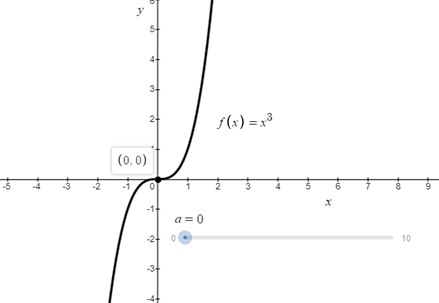
Now, plot the graph for g(x) such that g(x) = x^3 + a.
Observe the plot for a = 0 and a = 10.
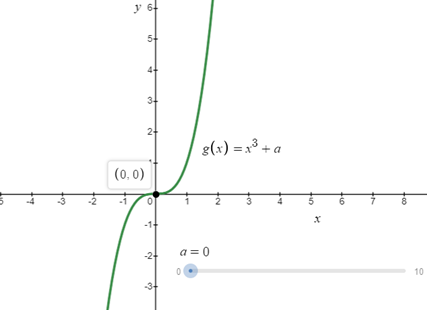
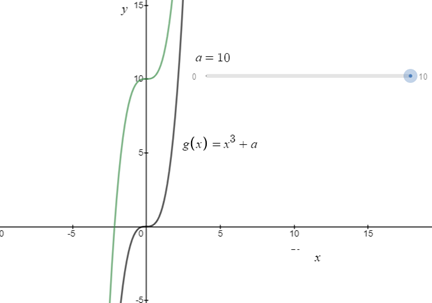
Similarly, plot the graph for h(x) such that h(x) = x^3 - a.
Again, observe the plot for a = 0 and a = 10.
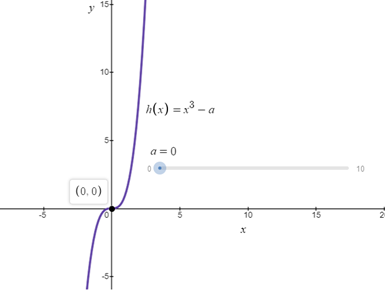
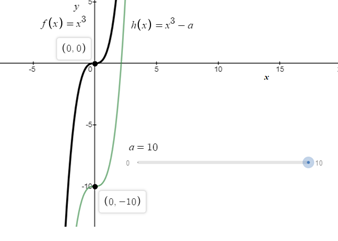
Again, plot the graph for i(x), j(x) and k(x).
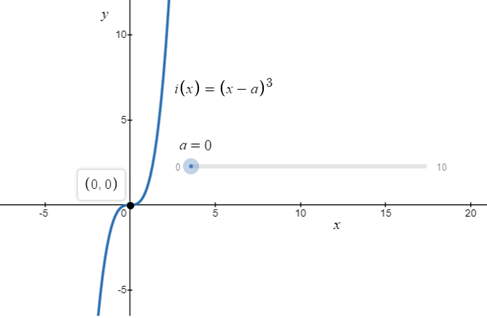
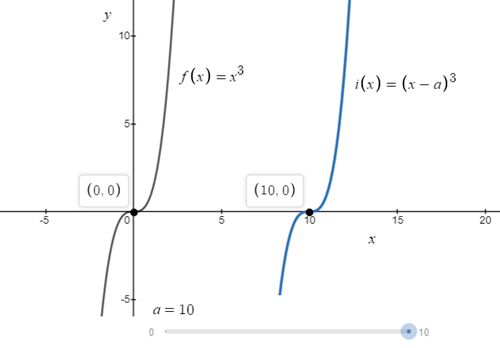
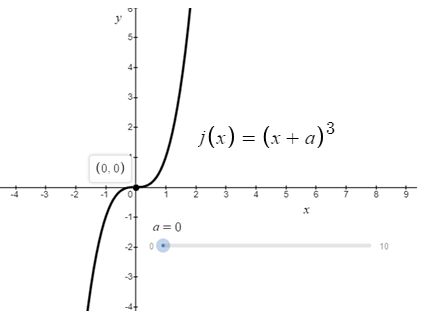
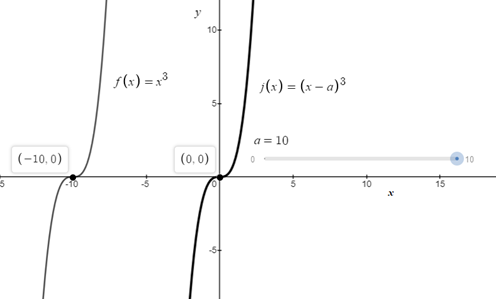
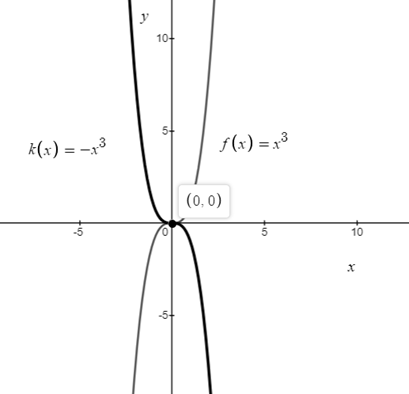
Compare all the curves. Refer the graphs for all the functions for comparison.
Comparison between f and g.
The slider a is added to the parent curve f(x) to obtain g(x).
The plot for f(x) is shifted a unit in vertical direction to get the g(x). As the value of a remains positive therefore, the plot for f(x) is shifted along positive y-axis.
Step by step
Solved in 9 steps with 10 images









